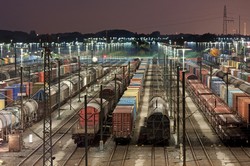Improved single wagonload competitiveness
A consortium of 10 European companies and research institutions, from the areas of rail transport and logistics, was formed, creating the project VIWAS (Viable wagonload production schemes). Researchers focused on presenting innovative and practical solutions for a sustainable wagonload transport. The VIWAS consortium comprised several railway operators, infrastructure providers and consulting/scientific partners. The EU-funded researchers demonstrated the applicability and the effects of the solutions developed, with field tests and pilot operations in business case studies. VIWAS achieved a few innovative breakthroughs. First, it improved last-mile operations integrating hybrid locomotives and bimodal shunting engines, ultimately resulting in reduced costs. A new production method for last-mile delivery aims at separating train movements and sidings shunting processes by deploying bimodal road-rail tractors. Hybrid locomotives are crucial in securing access to regional distribution rail networks and further environmental improvements. Researchers also developed modular wagon technologies, intended for flexible and efficient use of resources. Specifically, three components were developed reaching the prototype status: the Flex Freight Car and the Timber Cassette 2.0 from Wascosa as well as the Container Loading Adapter from SBB Cargo. The newly invented smart wagon telematics enable an improved cargo tracking at reduced costs. Finally, a new simulation tool for planning and optimising single wagonload (SWL) networks was developed. The simulation tool serves rail freight networks to facilitate the optimisation of SWL production schemes. It is based on the open source software MatSIM and models the routing of freight wagons according to the routes within the real SWL network. The project has both direct and indirect impacts. The direct impacts are visible through higher cost efficiency, stabilization of the transport volumes and gains in specific market fields. VIWAS improvements pave the way for a sustainable recovery and stabilization of the generated transport volumes. Indirect effects, such as a positive environmental impact, increased safety and a significant impact on European wagonload services will be visible in the long run. Watch the project’s video here.
Keywords
Single wagonload, transport, rail transport, VIWAS, hybrid locomotives, wagon telematics

